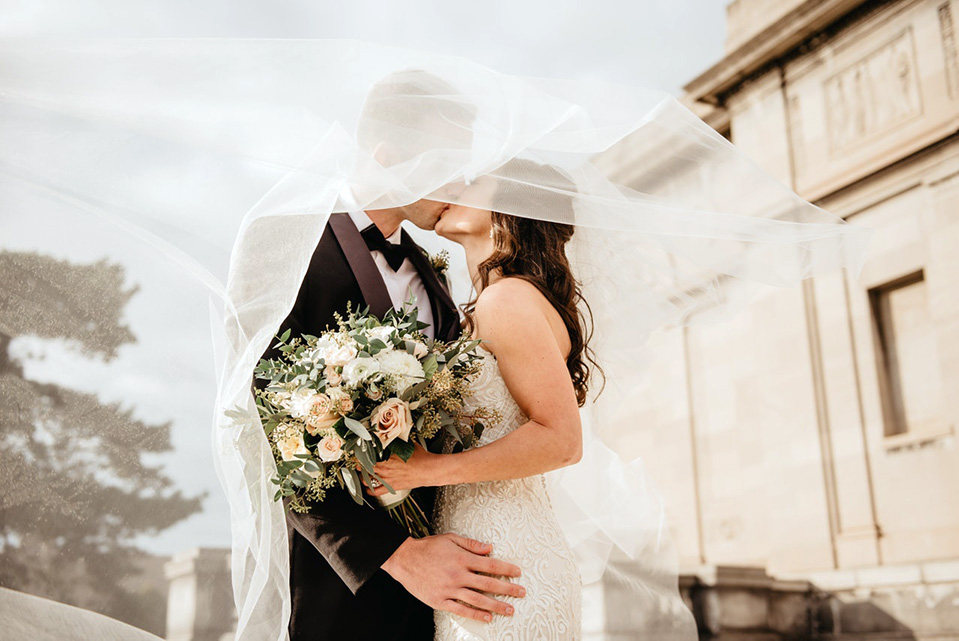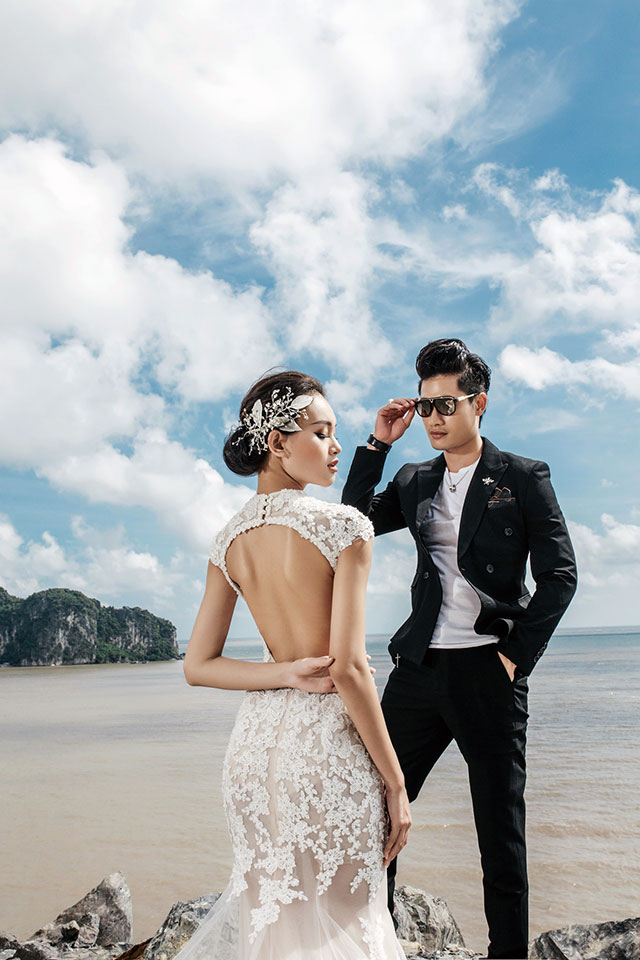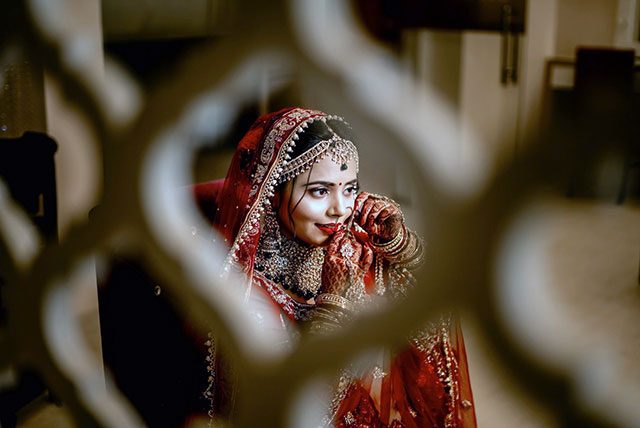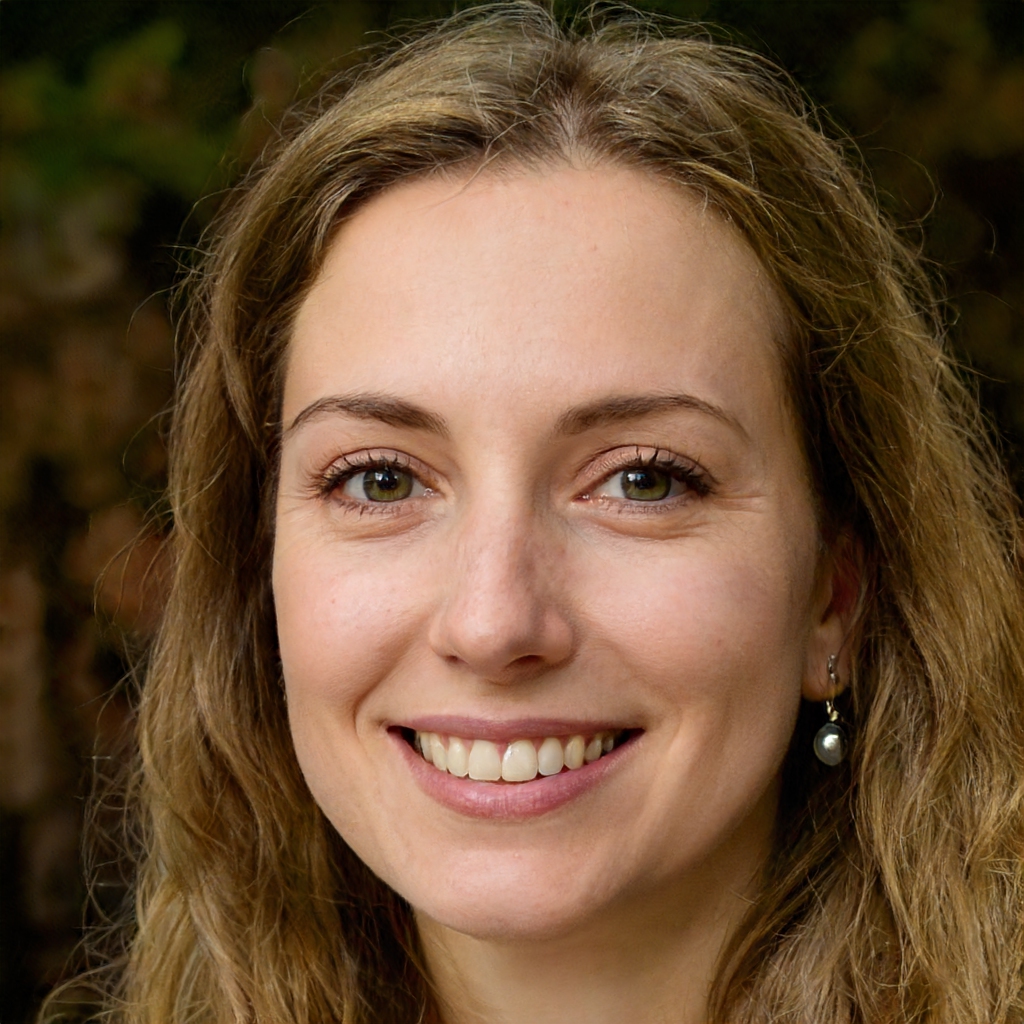If you’re planning to do wedding photography with the Canon 6D Mark II, you’ll want to familiarize yourself with its settings. This comprehensive blog post will teach you everything you need to know about the camera’s settings for wedding photography, from shooting portraits to reception.
By following these tips, you’ll be able to get stunning photos that capture the beauty of your wedding day.
My settings for shooting weddings
- ALWAYS shoot in RAW! – Non-negotiable!
- Select a fast aperture for portraits – f/1.2 – f/2.8 and a slower aperture of f/4-f/11 for group shots, establishing shots, and the wedding reception.
- Set your camera to Av (Aperture priority) – for faster shooting.
- When shooting outdoors use ISO 100-400. Use ISO 1600-3200 when indoors or in dimly lit areas.
- Select AWB. This shouldn’t matter when shooting in RAW.
- Select Evaluative metering
- Use single point AF
- Single shooting for posed portraits. Burst mode for candids, first kiss, etc.
- Select Neutral picture style

These are my go-to settings when shooting a wedding. I find that this combination allows me to work fast, and get the best image quality along with fast burst shooting, which is crucial at weddings. I also use these settings with my Canon 6D. Plus, you can even use these when taking portraits.
Is Canon EOS 6D Mark II good for wedding photography?

Wedding photography is a beautiful and emotional experience that should be captured in perfect detail. If you’re looking to invest in a great camera for this occasion, the Canon 6D mark II is worth considering.
I love using this camera when I’m shooting weddings because it’s slightly small and lightweight compared to other full-frame DSLRs such as the Canon 5D Mark IV and Nikon D800.
I can easily carry it around all day without feeling tired or sore. In terms of image quality, this is definitely one of the best full-frame DSLRs that you can buy right now.
Moreover, its high ISO performance is slightly (around 1 stop) better than its older sibling, the Canon 6D. And the autofocus system works really in low light situations, which is a must for wedding photographers.
The Canon EOS 6D Mark II features a 26 MP full-frame sensor paired with an impressive 45-point autofocus system that allows you to capture tack-sharp images in low-light situations. On top of that, the other (outside of center) focus points are quite responsive and accurate as well.
This is not the case with my older Canon 6D, the only fast and accurate focus point is in the center. It can be a pain sometimes to try to focus on something that is not in the center. I find myself recomposing a lot of shots to get a great composition.

With its great autofocus system and high image quality, it will help you capture beautiful wedding photos that will last a lifetime.
However, during its release, there was an autofocus issue that has been reported by a small number of users. They reported that their cameras can’t acquire focus on their subjects.
And Canon quickly released a firmware update that addressed this issue. Since then, there haven’t been any reports of this issue.
The only downside of this camera is its lack of 4K video recording support, but if you’re not planning on shooting any videos during your wedding day, then this shouldn’t be a problem for you.
Overall, the Canon 6D Mark II is great for both beginners and professional photographers who are looking for an affordable full-frame DSLR that can deliver professional-grade results without breaking the bank.
If the older Canon 6D is super reliable when it comes to weddings, then the Canon 6D Mark II is even better.
What is the best shutter speed for weddings?
The best shutter speed for weddings depends on the situation, but generally speaking, it should be at least 1/125th of a second. If you shoot with a wide aperture lens, then you can go as low as 1/50th of a second without getting motion blur and as long as the subjects are not moving.
If you’re using a telephoto lens with a narrow aperture setting (f2.8 or higher), then your minimum shutter speed should be around 1/250th of a second.
What focus mode should I use for weddings?
When it comes to wedding photography, capturing beautiful images is paramount. That’s why it’s important to know the different focus modes that are perfect for different situations.
If you’re looking for a mode that’s versatile and easy to use, try Single Point AF. It’s fast and easy to use and will help you focus on your subject even in low light settings. With the Canon EOS 6D Mark II, the center focus point is the most reliable.

It’s fast, responsive, and accurate. While the other 44 focus points outside the center are slightly slower. However, they’re still more than capable of getting the job done.
Another useful focus mode is Continuous Shooting, which is perfect for capturing motion and action shots without missing a beat.
Wedding photographers often use burst or continuous shooting modes to capture the bride throwing her bouquet. The bursts of frames can also be used for capturing candid shots, ring exchange, and the couple’s first kiss.
Do wedding photographers use flash?
Yes, wedding photographers do use flash but not all of them use it. It’s an important tool that allows them to capture a wide range of lighting situations, from bright sunlight to dimly lit rooms. It’s also a great tool for creating a dramatic effect, which is often used for formal bridal portraits.
Using an external flash or a speedlight is also useful for shooting during receptions when it’s often dark and you can’t rely on the available light.

One thing worth mentioning is, if you hire a professional wedding photographer who uses flash, make sure that you’re okay with them using it at your ceremony or reception.
Many venues have restrictions on using flash due to the bright light and potential for distraction.
How do you shoot a wedding in low light?
The first thing to do is to find a good light source. Find a window, open it and let some light in to brighten up your scene. You can also use a reflector to bounce the light back into your subject.
Another option is to use an external flash or an LED video light, but be careful when you do so because it can be distracting during a ceremony or reception.
Next, use higher ISOs to compensate for the lack of light. This will help you get faster shutter speeds and reduce camera shake. Finally, adjust your settings so that they are properly exposed.
How can I improve my wedding photography skills?

Wedding photography is a very popular and in-demand niche. If you have an eye for capturing the perfect moments, then this is the right career path for you. There are many things that you can do to improve your wedding photography skills.
1. The first tip is to get to know your camera, lenses, and their settings. It’s important to understand how your camera and lenses work so that you can take full advantage of its capabilities, including the ability to change the focus or the exposure value.
2. Shoot in RAW format all the time! This will give you a lot more room for editing and adjusting later on. I’m not saying that you should heavily rely on editing to fix your mistakes, but shooting in RAW can make your life so much easier.
3. Read up on composition and learn how to frame a shot properly. This is one of the most important things to master if you want to become a better photographer.
4. Always carry extra batteries and memory cards with you when shooting weddings. Bring an extra camera too, just in case. A wedding can be extremely stressful, and if your equipment fails on you at that moment, it could ruin the whole day.
5. Have a backup plan if something goes wrong during your shoot (e.g., if there’s an accident). This way, if something happens unexpectedly, you won’t have any trouble continuing with your job as soon as possible
6. Take a lot of pictures! There’s no way around this: You need to take a lot of pictures! As you get better at photography, you’ll find yourself taking fewer shots overall—but at the beginning, it’s important to take as many as possible so that you can practice your skills and learn what works best for different situations.
7. Attend a friend’s wedding. You can practice your wedding photography skills by taking more photos of your friends’ weddings or other events. This is a great way to improve your skills and get more experience. You might even be able to make some extra money doing this.
8. Attend workshops. Once you have a good base of knowledge, the next step is to attend some workshops. These can be very helpful in teaching you new skills and giving you an opportunity to practice them with other photographers.
Final thoughts
I hope you learn something from this article, and that it helps you become a better wedding photographer. Also, remember that there is no one size fits all camera settings for shooting weddings—the best camera settings for wedding photography will depend on the conditions and your shooting style.

Emma Lucy is the Founder & CEO of Emma Lucy Photography. She has over a decade of experience shooting weddings and other intimate events. She also tests the latest digital camera bodies, lenses, analog cameras, and other gear from Canon, Nikon, Sony, and other camera brands. She is From London and currently lives in the United States of America, where she spends most of her time as a self-employed professional photographer and writer.
